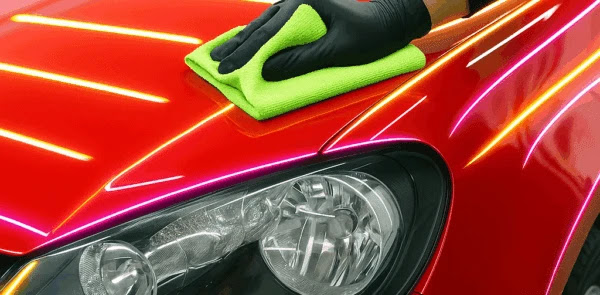Custom apparel has exploded in popularity over the past decade. From small businesses and online creators to global fashion labels, everyone wants to produce unique, eye-catching t-shirts, hoodies, and accessories. For years, the go-to printing methods were screen printing and DTG (Direct-to-Garment). Each had its strengths, but they also came with limitations.
Now, a new technology is rewriting the rules. DTF printing, or Direct-to-Film printing, is transforming how businesses and designers approach apparel customization. It combines versatility, durability, and cost-effectiveness in ways older methods struggle to match. The result? A powerful shift in the world of custom fashion.
What Is DTF Printing?
At its core, DTF printing is a transfer process. Designs are first printed onto a special film using water-based inks. An adhesive powder is applied to the design, which is then cured and ready for transfer. Finally, the printed film is heat-pressed onto fabric, bonding the design securely to the garment.
This process may sound similar to heat transfers, but DTF takes things to the next level. Unlike vinyl or sublimation transfers, it allows for more complex designs, sharper detail, and longer-lasting results. Plus, DTF works on a wide range of materials, from cotton to polyester to blends.
The real breakthrough is accessibility. A single DTF printer can handle everything from small one-off orders to bulk production runs, giving businesses flexibility without sacrificing quality. That versatility is exactly why DTF is rising so quickly in the industry.
Advantages of DTF Printing
The appeal of DTF printing comes down to its unique benefits.
1. Versatility Across Fabrics
DTG printing works best on cotton. Screen printing struggles with certain blends. DTF, on the other hand, can be applied to cotton, polyester, nylon, blends, and even non-traditional fabrics. This opens the door to creative apparel options beyond the basic t-shirt.
2. Durability and Wash Resistance
DTF prints are built to last. Unlike some methods that fade or crack after a few washes, DTF designs maintain their vibrancy and integrity over time. For customers, that means better value. For brands, it means fewer complaints or returns.
3. Vibrant Colors and Fine Detail
The process allows for sharp, colorful prints that capture gradients, small text, and intricate patterns. Designers aren’t limited to bold, blocky shapes—they can bring their most complex artwork to life.
4. No Pretreatment Needed
Unlike DTG, which often requires garments to be pretreated with chemicals before printing, DTF skips this step. This saves time, reduces costs, and streamlines production.
5. Scalable for Small and Large Orders
Whether you’re printing a single shirt for a customer or hundreds for a corporate order, DTF adapts. Its flexibility is part of why print-on-demand businesses are embracing it so quickly.
Comparing DTF to Other Methods
To understand why DTF is growing so fast, it helps to compare it with other printing methods.
- DTG Printing: DTG delivers soft-to-the-touch prints with excellent detail. It’s perfect for small orders, but it works best only on cotton and requires pretreatment. DTF is more versatile and scalable, making it better suited for mixed apparel collections.
- Screen Printing: Screen printing has been the gold standard for decades. It produces bold, durable prints but requires expensive setup for each design. It’s cost-effective for large batches but impractical for small runs. DTF eliminates the need for screens, making it faster and cheaper for smaller orders while still competing on quality.
- Sublimation Printing: Sublimation allows for all-over designs with rich detail but is limited to polyester fabrics. DTF provides more fabric options while still delivering high-quality results.
When businesses weigh the pros and cons, DTF often comes out ahead as the most balanced option: durable, versatile, and efficient.
How DTF Printing Is Transforming Custom Apparel
The impact of DTF printing extends far beyond technology—it’s reshaping the industry itself.
For Small Businesses
DTF lowers barriers to entry. Entrepreneurs can start a clothing line with minimal investment and scale as demand grows. The ability to print on-demand without large inventories reduces financial risk.
For Print-On-Demand Companies
Speed matters. Customers expect fast turnaround times, and DTF delivers. Its efficiency makes it ideal for e-commerce platforms offering custom apparel, where orders range from single items to bulk runs.
For Designers and Creators
Creative freedom is expanding. Designers no longer have to limit themselves to cotton or basic fabrics. They can experiment with new materials and offer unique product ranges to their audiences.
For Established Brands
Big apparel companies are also paying attention. DTF enables them to diversify product lines quickly, respond to trends faster, and reduce waste compared to traditional methods.
Sustainability Considerations
The fashion industry is under pressure to become more sustainable, and DTF printing is part of that conversation.
- Reduced Waste: Unlike screen printing, which often wastes ink and materials during setup, DTF is more precise.
- Less Chemical Use: With no need for pretreatment on most garments, DTF cuts down on chemical use.
- Challenges Ahead: The process still involves disposable film and adhesive powder, which raise sustainability concerns. Future innovations will need to address this to make DTF fully eco-friendly.
- Eco-Friendly Inks: Many suppliers are already experimenting with water-based inks that reduce environmental impact.
While not perfect, DTF represents progress toward greener apparel production compared to older methods.
The Future of DTF Printing
Where is DTF headed? The outlook is promising.
Wider Adoption Across Industries
Expect to see DTF expand beyond fashion into promotional products, uniforms, and specialty markets like sportswear.
Integration With Automation
As demand grows, automation will streamline production. DTF printers will become faster, smarter, and more efficient.
Hybrid Printing Solutions
Future printing might combine DTF with DTG or sublimation, offering even greater flexibility. This hybrid approach could unlock new creative possibilities for designers.
Consumer Expectations
As customers continue to demand personalized, high-quality apparel, DTF is well positioned to deliver. Its balance of durability, vibrancy, and versatility aligns perfectly with the future of fashion.
Conclusion
DTF printing isn’t just another trend—it’s a turning point in custom apparel. By offering versatility across fabrics, strong durability, and scalable production, it solves many of the limitations of older methods like DTG and screen printing.
For small businesses, it’s a gateway to launching apparel lines without heavy investment. For large brands, it’s a tool to diversify, innovate, and meet consumer demand faster. And for customers, it means better shirts, hoodies, and apparel that last longer and look better.
With its combination of quality, efficiency, and adaptability, DTF printing is set to change the industry forever. The rise of this technology signals a new era in custom apparel—one where creativity is unlimited, and innovation never stops.




